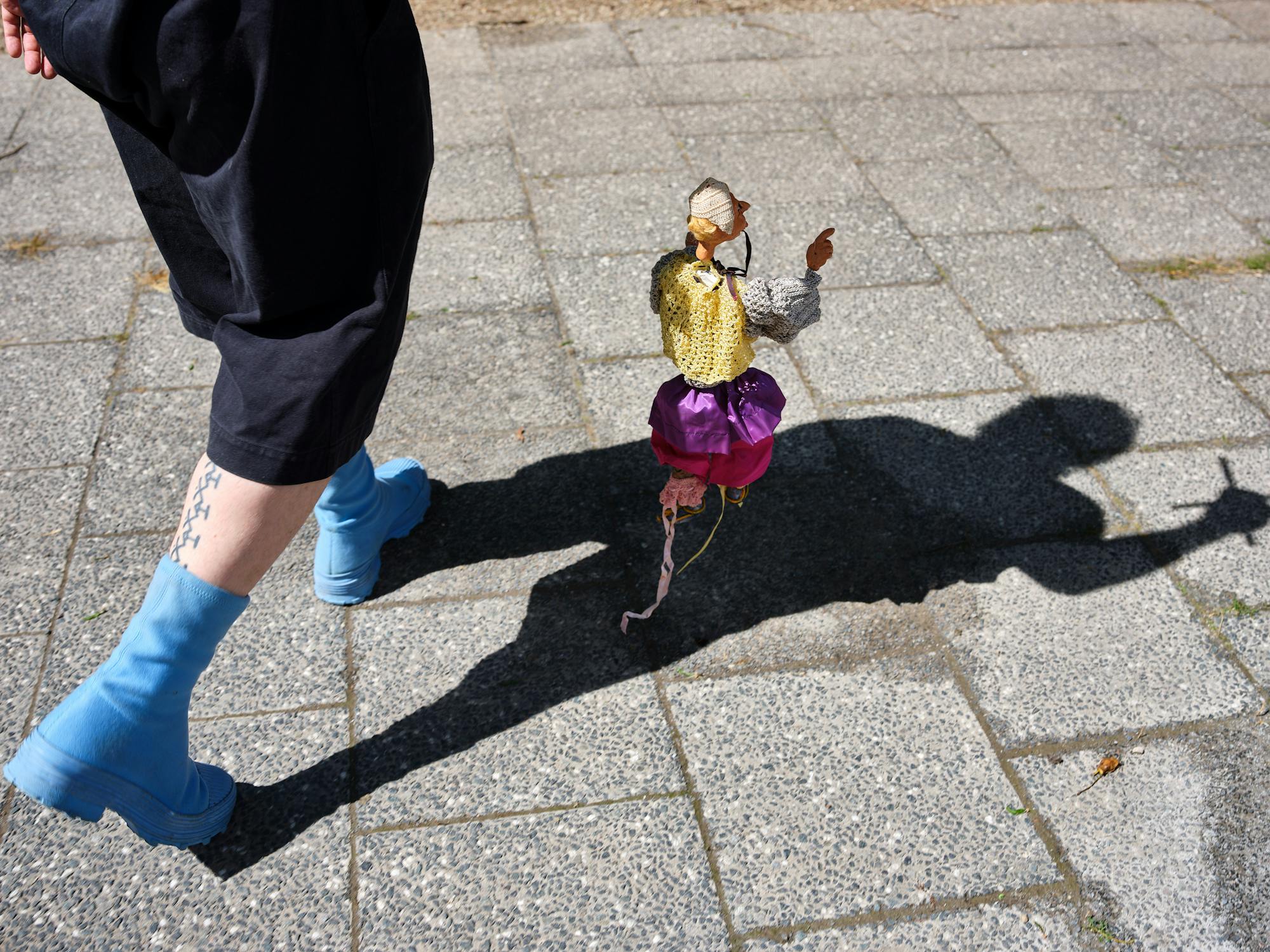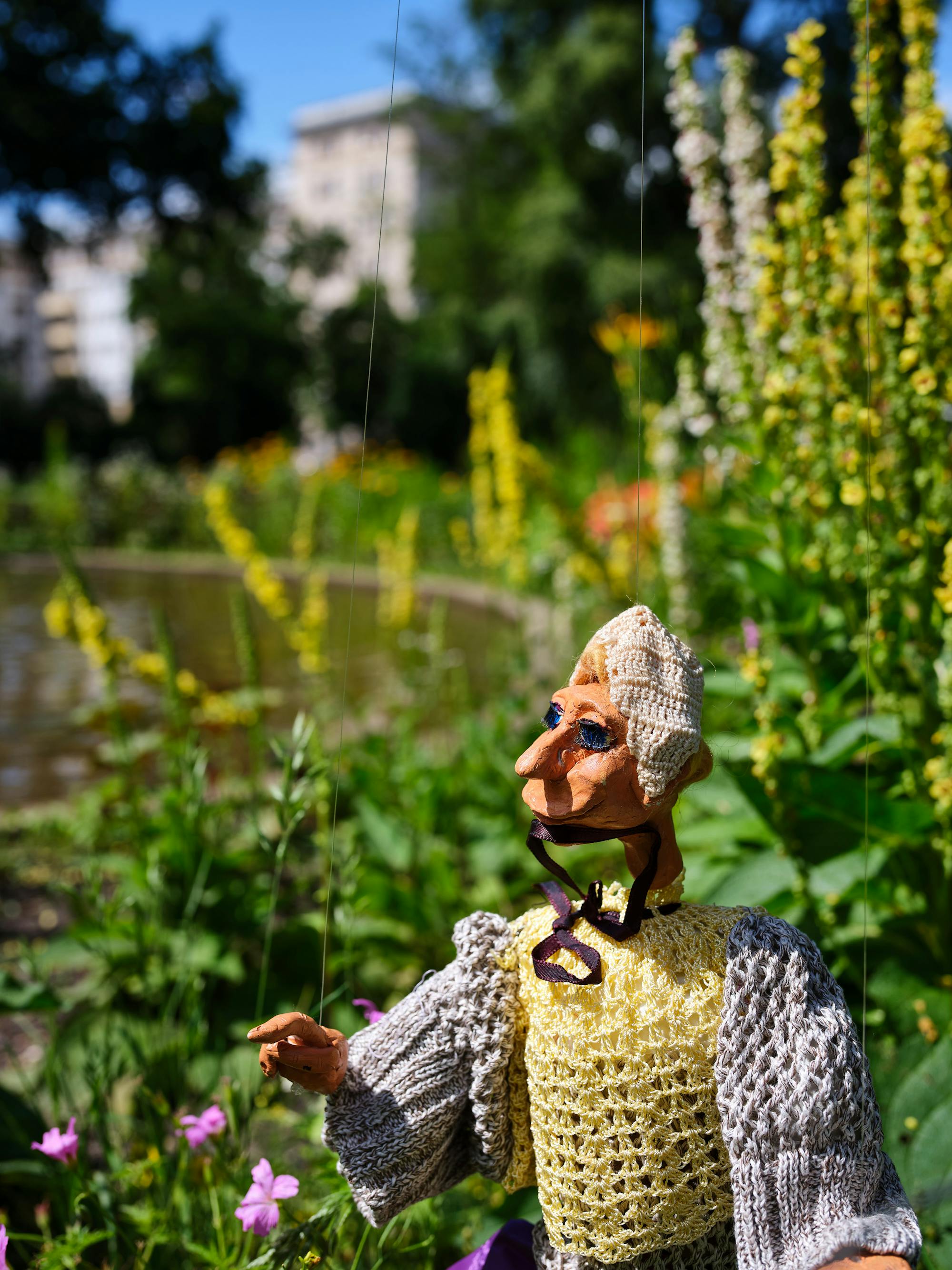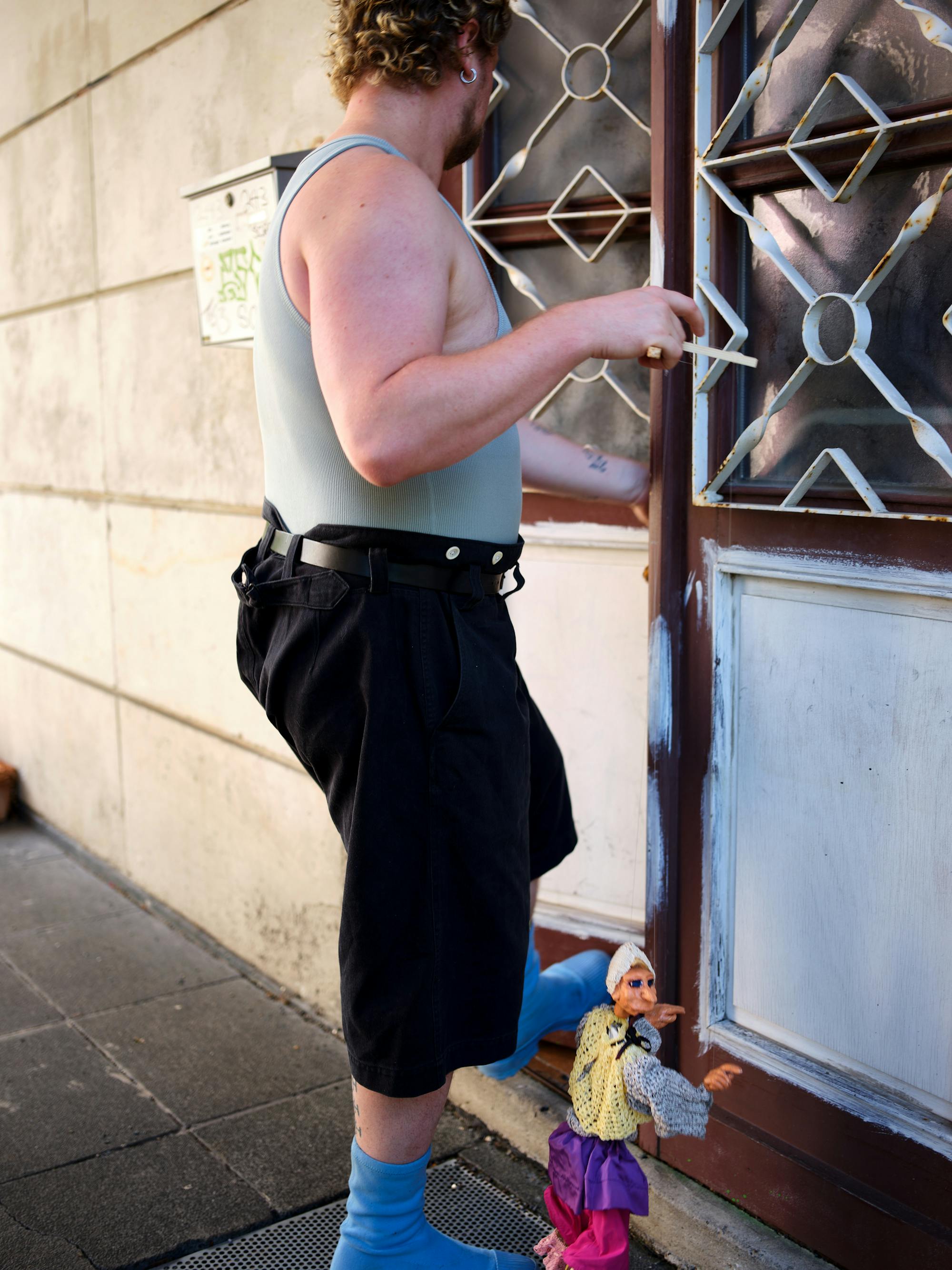Delving into the practice of puppetry with acclaimed performance artist Colin Self.

Puppetry was actually my entry point into art-making back when I was a teenager.
Kemmler Foundation: You’re known for your diverse range of artistic expression, including your musical compositions and performances. Can you tell us what led you to include puppetry in your practice?
Colinf Self: Puppetry was actually my entry point into art-making back when I was a teenager. In the early 2000s I was attending the Time-Based Art festival in Portland, Oregon and it was a very special time to be there. I knew I loved performance art and the queer-feminist DIY work of the Pacific Northwest and wanted to follow in their footsteps.
I remember going to the PICA library in Portland and stumbling across a VHS library of performance works, including a Russian Animation Anthology which led me down a path of puppetry. I ended up applying to the Evergreen State College in Olympia to study puppetry and experimental writing— and that was it.
You’ve been interested in puppetry for a long time. How did this interest evolve over time?
I actually left puppetry behind for a long time. After dropping out of Evergreen, I wanted to focus on video and performance-- and I found drag to be this wonderful proxy to the relationship of puppet/puppeteer, being connected to the spirit world while in motion onstage. Over the years puppetry would make itself appear in the form of sculpture and in object theater, dancing and playing with objects onstage. I remember tying knives to a small motor, watching them spin, laughing at the precarity of an animatronic object like that.
Around 2015 I began to wear masks and play with objects like rubber mallets, LED lanterns, and books on rope, exploring the transformative and comical qualities of these characters. The book, a reoccurring character in my work, with an LED light inside, illuminating and animating old stories. I gradually made my way back to animatronics, something I had studied long ago. It’s a tedious a time-intensive material practice, but gives me so much grounded energy in the studio.

How do you develop the look and characters of your puppets? Can you maybe describe one of the characters?
Some of them are developed to resemble drawings I’ve made, and then sometimes I am using DALL-e prompts like “the real housewives of the dark crystal” as source material inspiration. My process is social and usually created in collaboration with other friends and assistants present who inform and imbue the process with our conversations.
A part of me had also begun to feel as though I was working for the spirit world, specifically friends who had passed away, and began to create these puppets in reverence of them and their ways of being. Wig choices, outfits, voices, mannerisms all became reflections of queer kin who had passed away. It is often while I am sitting at the desk talking about deceased friends and their legacy that I am making these puppets with others.
Beatrice is an anomaly. She was conceived to be made to embody the spirit of curiosity; one hand with the finger pointing outward, neck slightly extended forward. She wears an Issey Miyake inspired pink and purple ruffled pants my friend Lesley Moon had made, and knit-wear sourced from a deceased evangelical woman in Oregon (long story). Her short, wavy blond hair sits neatly beneath a crocheted bonnet.
Her voice is about bravery and playfulness, and the center of her heart is a star which guides her forward in times of darkness. She loves to sing!
I have been taught that all puppets are alive so long as they are perceived and thought of.
Are there certain characters/personalities you keep coming back to? In developing a performance, do you feel the puppets sometimes take on a life of their own?
I have been taught that all puppets are alive so long as they are perceived and thought of. Being in their presence imbues them with energy and the capacity to be a conduit of transformation; often instigating a transition away from fear and toward a sense of agency. The Real Housewives are a character group I keep coming back to - imagining the crises and narratives of a sisterhood that lives within the realm of The Dark Crystal… I don’t know how far I can go without getting a law suit. Maybe I can consider it “fan art”.
They absolutely have lives of their own, each as complex as we humans do. The job of the puppeteer is to listen and receive that information and to convey it— both in language and in the inexplicable, the illegible or complicated parts of being a puppet.

Place has become a curious theme of my return to puppetry.
Could you tell us more about where your decision to return back to a more material practice and how it personally serves you in your diverse range of artistic expression?
I’ve been traveling for work since 2015… something I have immense gratitude for. But I also have recognized how difficult the long-term effects of a transient work life are. Socially, physically, emotionally it is very emotional and difficult to feel like no matter how hard I try to ground, I am only able to make work if I leave where I live.
With a puppetry studio, I love that you are really just with your material, and you have to focus on the material existence of this little character and their life. Spending a few hours molding the armature of two little hands, and then baking them, and painting them— and just being with this little process— is immensely grounding for me.
Place has become a curious theme of my return to puppetry. Where these puppets are from, where they go, are all strange extensions of my impetus to return to a material practice. I made them in hopes that we can together co-facilitate a new system of performance life.
The production "Prologue X Parable" the culminating performance of Colin Self's residency at Callie’s Berlin on April 29th 2023 was supported by Kemmler Foundation.